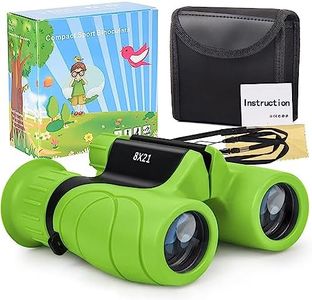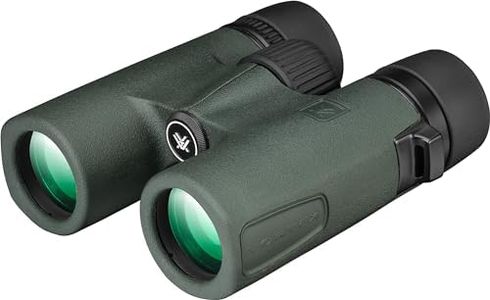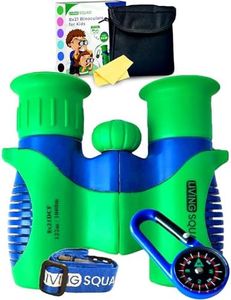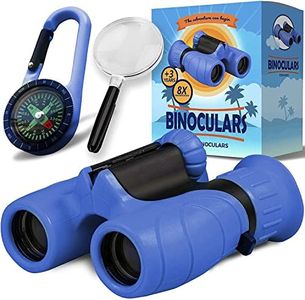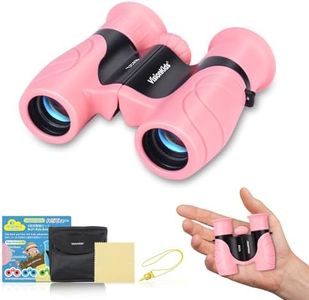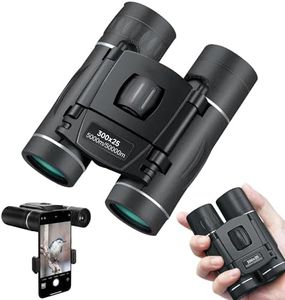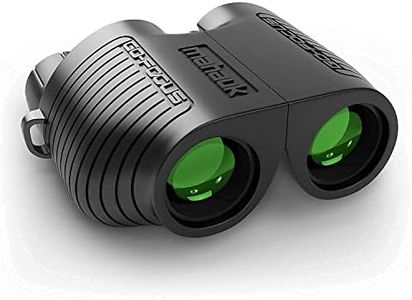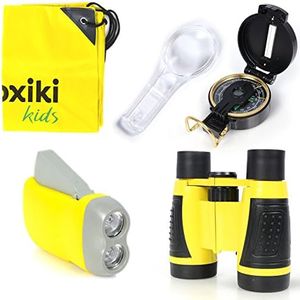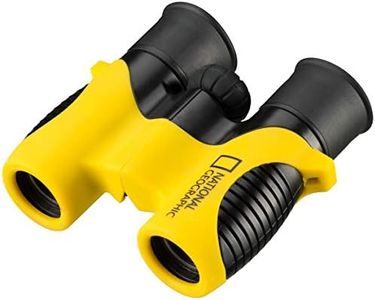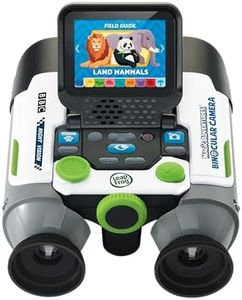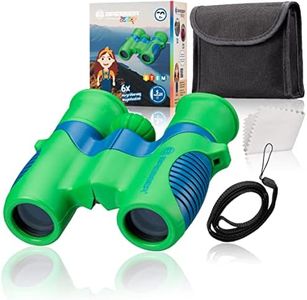We Use CookiesWe use cookies to enhance the security, performance,
functionality and for analytical and promotional activities. By continuing to browse this site you
are agreeing to our privacy policy
10 Best Binoculars For Kids
From leading brands and best sellers available on the web.By clicking on a link to a third party's website, log data is shared with that third party.
Buying Guide for the Best Binoculars For Kids
Choosing binoculars for kids is all about finding a balance between size, weight, ease of use, and safety. Since children's hands and eyes are smaller, and their needs are different from adults, it's important to focus on kid-friendly features that will make using binoculars fun and frustration-free. Understanding the key specs ensures you pick a pair that your child can use comfortably, enjoy, and handle with ease.MagnificationMagnification tells you how many times closer an object will appear compared to the naked eye. For kids, a lower magnification, usually between 6x and 8x, is ideal because higher magnifications can make the image shaky and tough to keep steady in small hands. Choose a lower magnification for more stable and easier viewing, especially for activities like nature walks, birdwatching, or sports events.
Objective Lens DiameterThe objective lens diameter is the size of the front lens, measured in millimeters. Larger diameters let in more light and can make the view brighter, but they also make the binoculars bigger and heavier. For kids, objective lenses in the 21mm to 30mm range are usually best, as they offer a good balance between brightness and size. If the child will mostly use them outdoors in good light, keep to smaller lenses for lighter weight.
Weight and SizeWeight and size play a crucial role because kids have smaller hands and may tire quickly holding something heavy. Lightweight and compact models are easier to use and carry around. Consider binoculars specifically designed for children, which are often made with smaller grips and simpler controls, reducing the risk of dropping or mishandling them.
DurabilityDurability refers to how well the binoculars can withstand rough handling, drops, and exposure to the outdoors. Since children may not always be gentle, choose binoculars with rubber armor or protective coatings that absorb shocks and provide extra grip. The more rugged the build, the better it will survive accidental drops or bumps.
Ease of Use (Focus Mechanism)The focus mechanism is how you adjust the sharpness of the image. For kids, a simple and smooth central focus wheel is ideal. Avoid complex systems that could be confusing or frustrating. Test out the focus control to make sure it's not too stiff or loose for small hands—kids do best with easy-to-turn, uncomplicated systems.
Interpupillary Distance (IPD) AdjustmentInterpupillary Distance (IPD) is the space between the two eyepieces. Since kids have narrower faces than adults, make sure the binoculars can be adjusted to fit their eyes comfortably. Choose models that let you narrow the eyepieces enough so the view merges into one image—this prevents double vision and eye strain, allowing kids to enjoy longer sessions without discomfort.
Safety FeaturesSafety features like rubber eyecups, rubberized bodies, and non-toxic materials are very important for children's binoculars. Rubber eyecups protect the eyes if the binoculars are pressed against the face, while rubberized bodies help protect from bumps and falls. Check for any small parts that could break off and ensure the product is clearly marked as safe for children.
